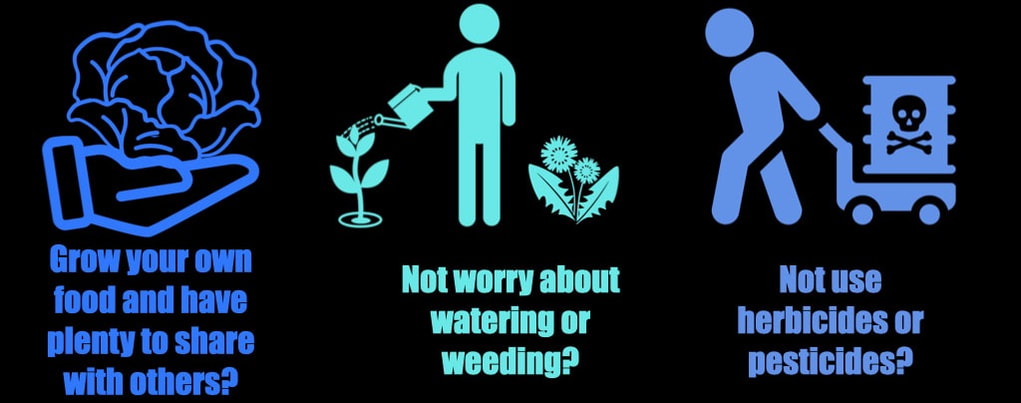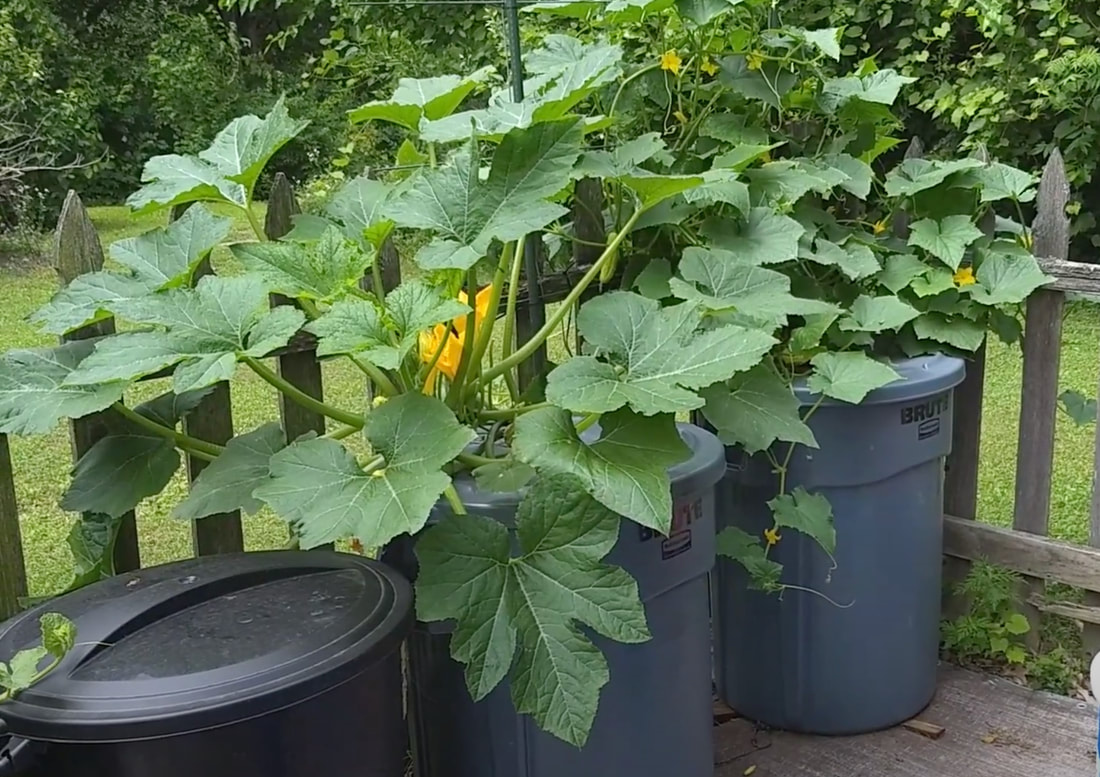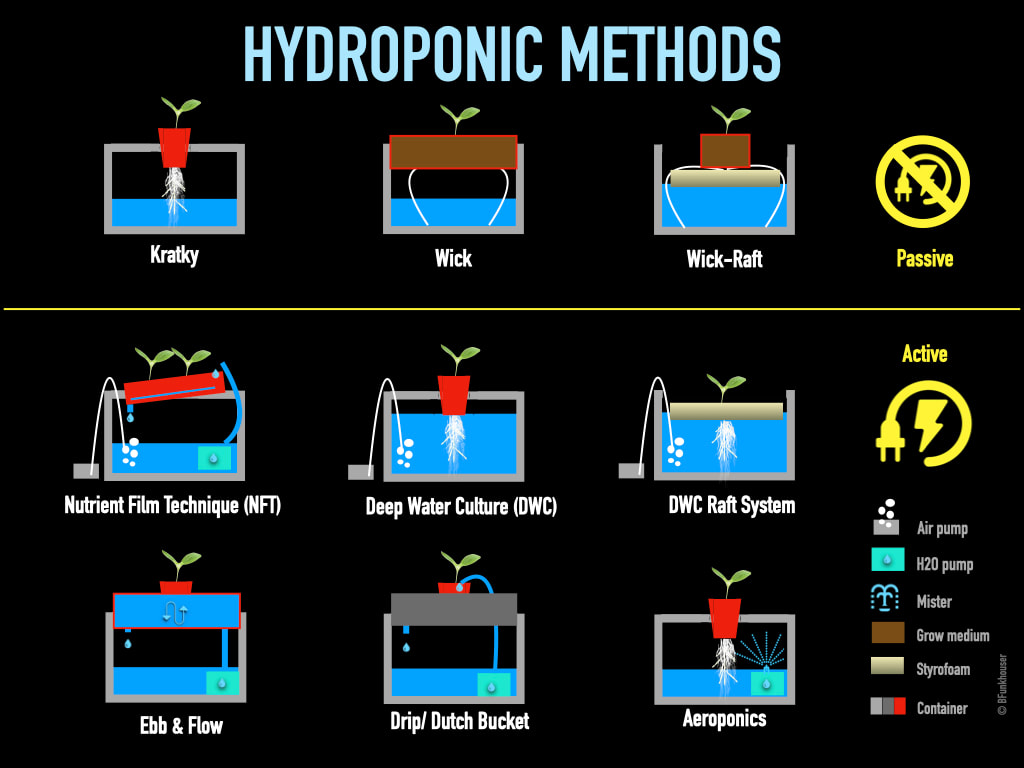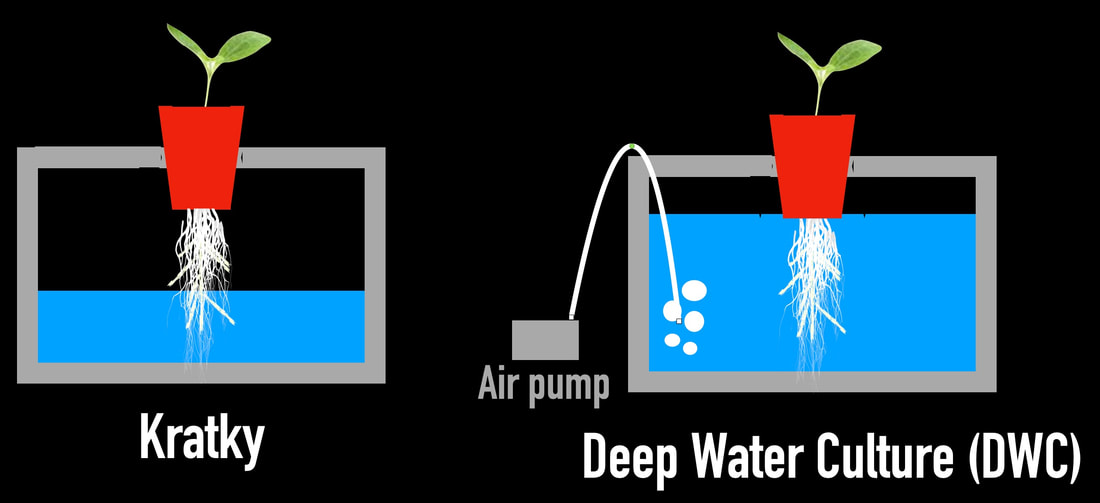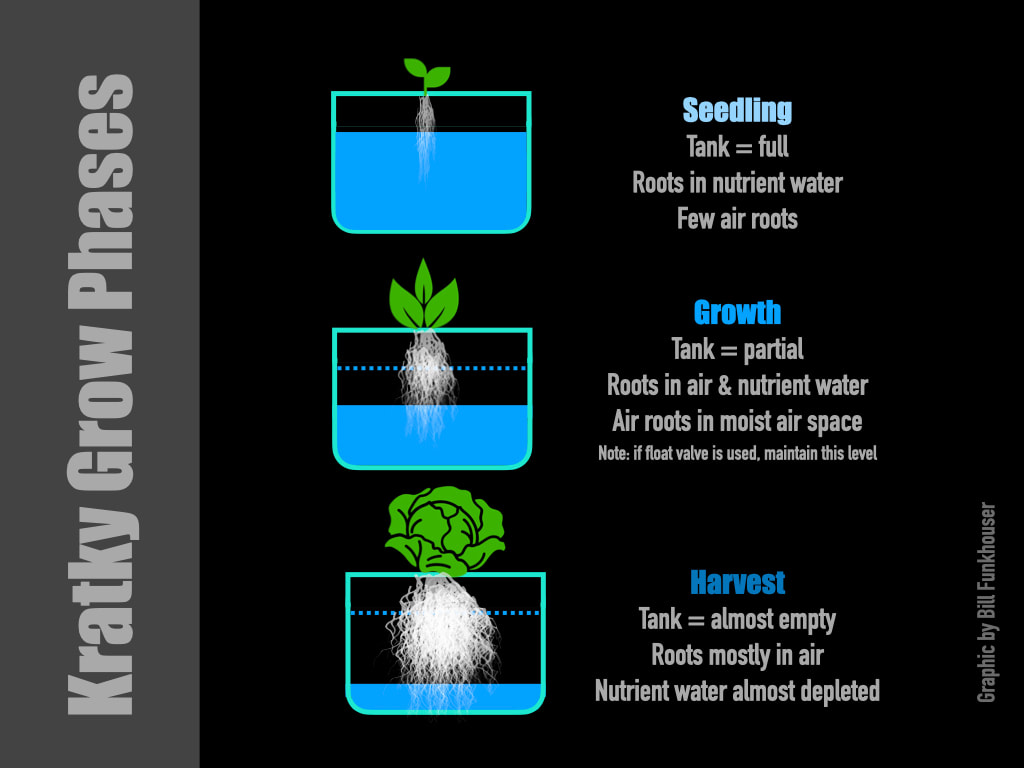Would you like to...
Hydroponics may provide the answer, and Kratky Method Hydroponics is the simplest way to start.
Hydroponics is the practice of growing plants without soil, in nutrient rich water.
Hydroponics have been around since the Hanging Gardens of Babylon, which was built around 600 B.C. Modern hydroponics made significant advancements about 100 years ago at UC Berkeley when Dr. William Gericke grew 25 ft tall tomato plants without soil. One of the people who studied Dr. Gericke's work was Bernard Kratky who went on to receive his Masters and Ph. D. in Horticulture from Purdue University.
|
Photo credit: Matt Garver
|
Dr. Kratky is Emeritus Horticulturist at University of Hawaiʻi at Mānoa and has written many papers on vegetable production and hydroponic methodology Check out his YouTube channel "dakineapproaches". The majority of his research papers feature the terms "non-circulating" in their titles: For example, "Non-circulating hydroponic cucumber production in plastic trash containers and polyethylene-lined barrels" or "A suspended net-pot, non-circulating hydroponic method for commercial production of leafy, romaine and semi-head lettuce" . The "non-circulating" adjective means the water is not moved by pumps or injected with air. This method was developed to help areas of the world with poor soil quality and limited access to electricity. He has, at times, resisted having his name associated with this method as he feels he has worked with many others on this topic and doesn't "own" it. He explains this in this highly recommended video. That said, the name is out there and he's happy that people enjoy the method whatever they call it. (And, "Kratky" is a lot easier than "suspended net-pot non-circulating hydroponic method".)
|
The key concept about the Kratky Method is it is one of the few passive hydroponic methods. This means no electricity is used to pump air or water. This graphic shows the separation between passive and active hydroponics.
|
Notice the similarity between Kratky and Deep Water Culture. Dr. Kratky understood DWC but wanted to explore the possibility of growing without pumps. His method allows people to grow plants around the world in developed and developing countries alike. Plants grown this way are not dependent on the electrical supply nor will they die when a pump fails. While plants grown in DWC may grow faster or larger, it is a mistake to assume DWC is an improvement on Kratky. Independence from a power supply is what gives the Kratky method its own advantage.
One discovery that Dr. Kratky and others made was how plants create "air roots" in this system. For optimum success with this method, it is important to understand air roots. |
Air roots
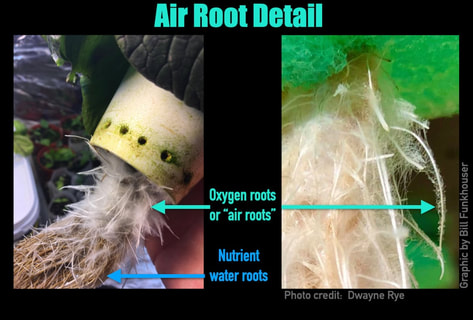
Notice the fine, white roots just below the cup. These are "air roots" and they develop in the moist air space above the nutrient water. This is a special adaptation that plants make to absorb oxygen from the air while the water roots below the air roots absorb the nutrient water. You may know that plants absorb carbon dioxide? They do that through the leaves while oxygen is absorbed through the roots. The discovery of this adaptability of plants was revolutionary and critical for the success of this method since air pumps are not used. These air roots are fragile and should never be submersed. Even splashing them with water can stress the plant. They can also be damaged if not kept in a moist environment.
Summary
- People have been growing without soil in nutrient rich water for thousands of years
- Hydroponic growing methods are separated into passive (without pumps) and active (with pumps) methods.
- Dr. Bernard Kratky is one of the scientists who helped develop the most popular method of passive hydroponics which now bears his name.
- Success with the Kratky Method depends on understanding the concept of air roots which develop in the moist air space above the nutrient water.
- Air roots must not be submerged or splashed with water.
Let's Get Started
Note: This site is created and maintained by Bill Funkhouser in an effort to encourage and educate others about growing hydroponically.
I’ve made every effort to read Dr. B. A. Kratky's writings and watch his videos but I don’t claim to speak for him. These are my interpretations of his work. Dr. Kratky has graciously told me,
"I encourage different versions and backgrounds of simple hydroponic concepts. The 'story' of the concept becomes more complete as the number and range of storytellers increase."
This site represents my years of Kratky experience and dozens of hours making the site. Everything offered completely free to the public.
If you found it worthwhile, buy me a cup of coffee. Thanks!
I’ve made every effort to read Dr. B. A. Kratky's writings and watch his videos but I don’t claim to speak for him. These are my interpretations of his work. Dr. Kratky has graciously told me,
"I encourage different versions and backgrounds of simple hydroponic concepts. The 'story' of the concept becomes more complete as the number and range of storytellers increase."
This site represents my years of Kratky experience and dozens of hours making the site. Everything offered completely free to the public.
If you found it worthwhile, buy me a cup of coffee. Thanks!
